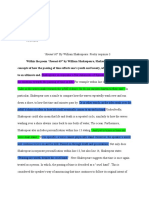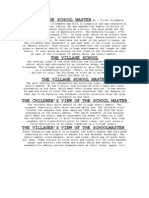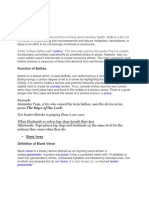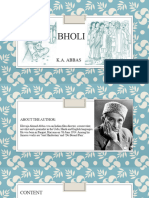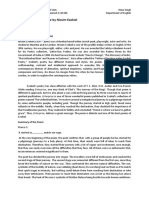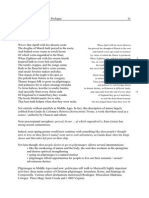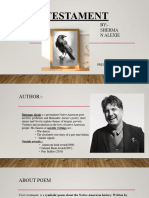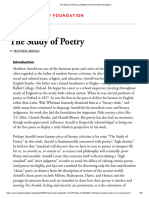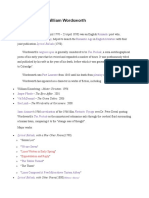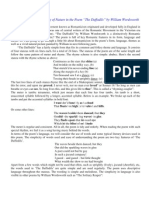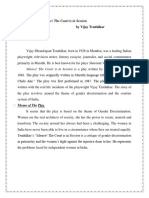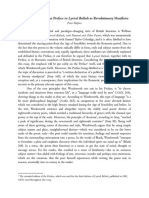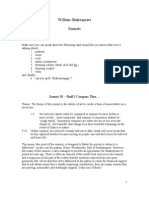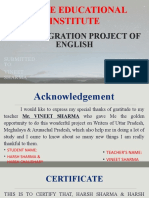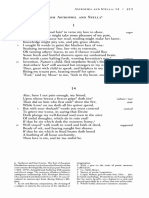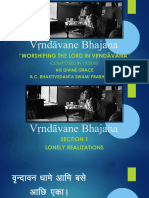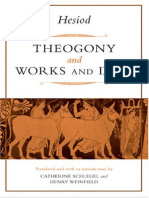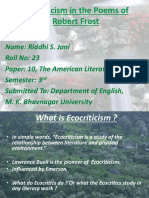How does Shakespeare present Time and Love in his sonnet no 65/
imagery in the poem/ the sonnet is the glorification of Art over
mortality.
Time and art are recurring motifs in Shakespeare's sonnets. In Sonnet 15,
the speaker talks of being "in war with time". The poet has frequently
assured his 'beloved' that beauty is preserved "in eternal lines to time"
(sonnet 18). Sonnet no 65 also reflects on the very motif.(central idea)
Shakespeare's sonnet no 65 is closely related to the previous two sonnets,
no. 63 and 64. In all these sonnets time is presented as a destroyer. In
sonnet no 65 the poet has built up an argument (subject matter) with three
quatrains. These quatrains are written in the form of questions. The first
four lines reveal the concern for the transitoriness of beauty in the mortal
world:
"How with this rage shall beauty hold a plea
Whose action is no stronger than a flower?"
The sonnet is full of images. The abstract 'beauty' is personified as 'flower'.
It suggests the innocence and timidness of beauty against the rage of
mortality. The persona feels worried because seemingly indestructible
things like 'brass', 'stone', 'earth', 'sea' cannot withstand the ravages of
mortality. Hence the flower has little chance of survival . The words 'hold a
plea', 'action' are the legal terminology . They make an image of a
courtroom where the flower pleads its case.
The second quatrain is more specific. The image of beauty is continued
with a serious concern for its permanence:
"O how shall summer's honey breath hold out Against the wreckful siege of
batt'ring days?"
�Time threatens our life. The speaker fears that the beauty and fragrance of
spring and summer can be shortened by the 'batt'ring days' of autumn and
winter. Time does not spare even 'rocks impregnable' and strongest 'gates
of steel'.
The third quatrain expresses the 'fearful meditation' because the world
seems to offer no relief from death. The sorrowful mood of the speaker is
revealed in his speech:
"Where, alack,/ Shall Time's best jewel from Time's chest lie hid"?
Time is now represented as a miserly man carefully sorting and storing all
the jewels in his chest or coffer. Time is also death that puts all beauty into
coffin. Thespeaker also knows that no strong hand can prevent the swift
foot of Time. None can forbid his spoil of beauty. These thoughts are also
reflected in sonnet no. 64:
"Ruin hath taught me thus to ruminate;/ That Time will come and take my
love away."
But the final couplet bursts forth the inner truth:
"O none, unless this miracle have might
That in black ink my love may still shine bright".
It is art that can only immortalize and renew love. The speaker calls his
verse a 'miracle' because these small lines of black ink have the power to
oversway Time and Death. It also implies the idea that 'black ink' can make
beauty 'shine' in opposition to the conventional idea that 'black' and 'beauty'
are antithetical. In Shakespeare's sonnet no 63, similar idea is given: "His
beauty shall in these black lines be seen".
Thus sonnet no. 65 reflects the poet's deep faith in art that can outlive
time. In sonnet 18 the poet says "So long lives this (poem), and this gives
life to thee". Here also he asserts that his poem can immortalize beauty
against time.

